
How to create and prepare a raised vegetable bed
SEO Space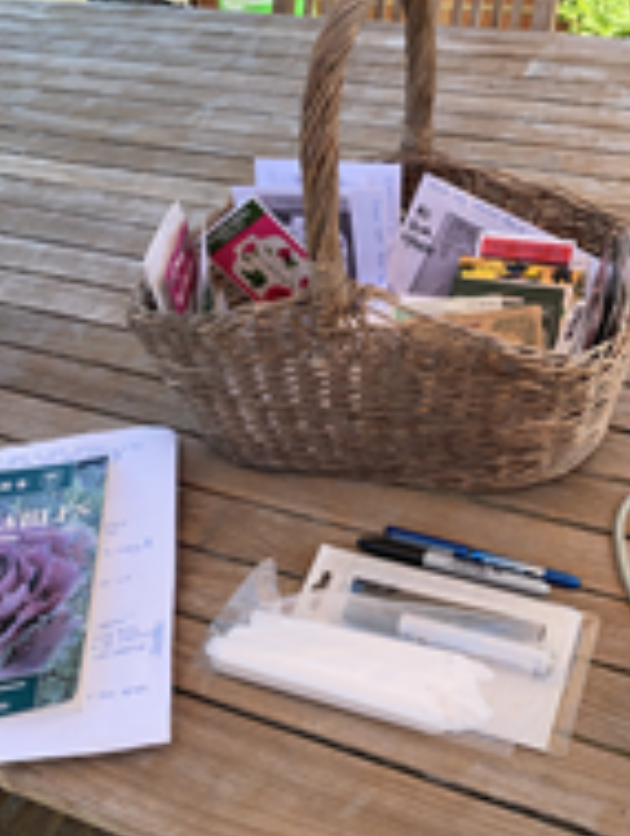
I like to keep all of my seeds, labels and brochures in one basket, which I can just grab—along with a cup of tea – and sit myself in a quiet spot to do some vegetable bed planning.
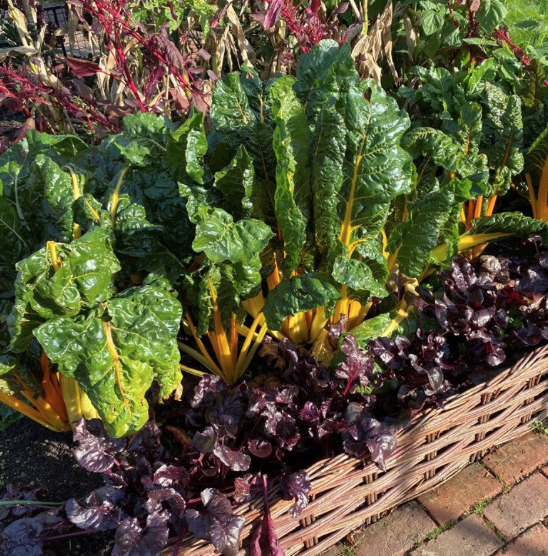
A raised bed in the potager garden at RHS Rosemoor is both beautiful and productive.
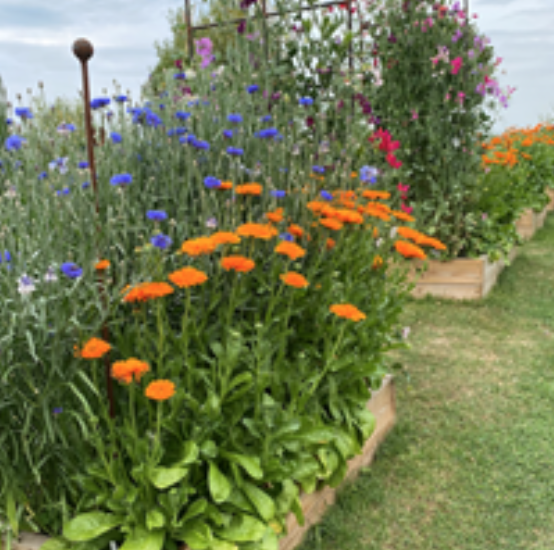
In a raised bed, flowers and vegetables can be mixed to great effect. An arch is ideal for sweet peas, beans or gourds, whilst stakes are invaluable for tall brassicas or marking rows.
Growing and harvesting your own vegetables is the most satisfying of feelings: popping those first tiny peas into your mouth or making bruschetta topped with baby broad beans is unforgettable (see end of article for recipe!).
Whether you are lucky enough to have a good-sized plot, a small courtyard or even a balcony, you’ll be amazed at how much you can get out of a small space. You just need to do a bit of thinking and planning ahead.
Creating your raised bed
If, like me, you don’t have the luxury of an area that you can devote to vegetables, then a raised bed or potager, which is both ornamental and productive, may be the answer.
Although raised beds can be built at any time, most gardeners find it convenient to build them in winter, as long as the soil is not too wet or frozen.
How big should a raised bed be? Walking on a raised bed is best avoided so go for a width of 1.0-1.5m to allow access from both sides and at least 30cm tall to give the plants room for root growth.
What material should I use? Timber or willow branches are less expensive but, even when treated, they will eventually rot. Sleepers are the most effective timber but somewhat bulky. Natural stone or brick will last years and looks good but is expensive. I use one of our bespoke steel raised beds and troughs, which is 40cms tall – an ideal height for working at.
Whatever material you are using, take care to mark out and level the area, loosening the soil inside the base of the bed.
Once the sides are in place, lay some drainage material in the base to improve drainage. I used 10cm of course gravel before filling with a mixture of topsoil and composted material.
At the end of each season, replenish the top of the bed with new soil.
What should you grow?
When I had an extensive vegetable garden, I was able to grow luxury vegetables such as soft fruits, asparagus and sweetcorn. All of these require a lot of space but are worth the effort when picked and eaten straight from the plot. Sweetcorn, in particular, loses its flavour from the moment it is picked, as the sugars in the cob begin to turn to starch. Now that I have limited space, I just grow the herbs and vegetables that are best eaten when 100% fresh.
A firm favourite is broad beans. I plant the seeds in a double row in my raised bed in October (it gives them a head start and is said to reduce the incidence of chocolate spot on the plants), and I get my broad bean supports in when I plant, to mark the row and support the plants as they grow.

One of our solid mild steel raised beds stands ready for planting, complete with its vegetable cage, which will provide support and protection for our homegrown vegetables. Both can be made to order, to your own measurements.
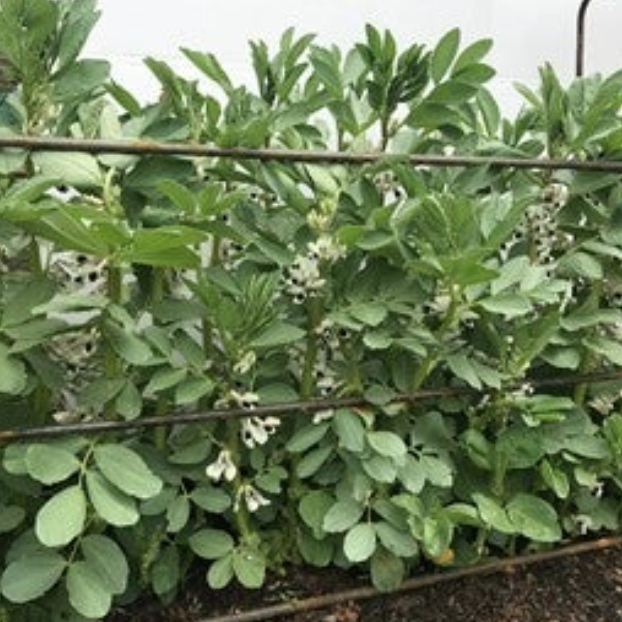
Our 3-pole broad bean supports come with two 120cm vertical stakes, each with 3 hooks to hold the horizontal poles. At 2m long, they will support a good volume of broad bean plants and allow for easy harvesting.
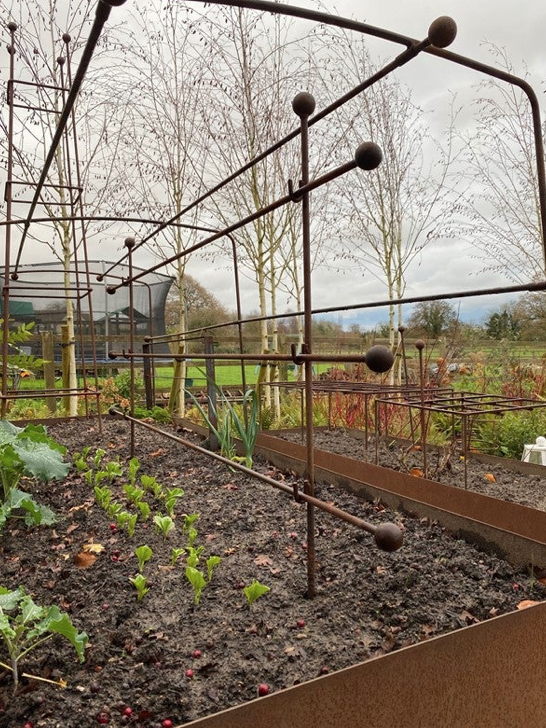
The vegetable cage in autumn – most of the crops have been harvested but broad beans and brassicas will stand through the winter to crop in spring.
Other vegetables that I love to grow from seed are spinach (a great cropper, particularly perpetual spinach beet), peas (if you’re really pushed for space there are some very good dwarf varieties that can be grown in containers), patio cucumbers (look out for varieties such as the brilliantly named ‘Burpless Tasty Green’), dwarf French beans and runner beans. With all the vegetables that I grow from seed, I start them indoors in a cool greenhouse or on a bright windowsill.
Finally, the cook’s favourite – herbs. I find the pots sold in supermarkets are both cheap and well grown and give me a head start in the spring. I would not be without parsley – both curly and flatleaf – chives, oregano, tarragon, sage and basil. Once planted and regularly picked, most of the herbs are perennial. Basil does need to be planted each year, but it is very much worth the small extra effort – that inevitable glut gives cause for making pesto, which can then be kept in the fridge for several months or even frozen. Basil can of course also be used to top bruschetta and add to pasta dishes. A true taste of summer.
Should you grow vegetables from seeds or plugs?
I tend to want fewer of more varieties and hate the waste of packets of seeds that sit in a drawer well beyond their sell-by-date, so now I tend to buy a number of vegetables as plugs or young plants.
Most garden centres offer young bean plants in spring but there is a good variety of plants available by mail order from reputable growers. Cucumber ‘Patio Snacker’ from DT Brown is an excellent cropper. This year I shall also try pea ‘Tom Thumb’, which can be grown in a container. Thomson & Morgan's tomato ‘Bite Size’ looks ideal and can be companion-planted with French marigolds, basil or chives to ward off whitefly. Finally, a superb lettuce that doesn’t appear on the supermarket shelves – ‘Freckles’ – is available as plug plants from www.primrose.co.uk
How can you protect and support your vegetables?
Sadly, we all suffer from predators of one kind or another. Whether it is the deer that come in from the woods or caterpillars that strip the leaves, we need to protect the crops that we have taken the time and care to grow.
I use one of our bespoke vegetable cages, which I leave in throughout the year. In spring I cover it with a protective mesh (I prefer something that birds will not get caught in, such as Enviromesh from Gardening Naturally) that lets light in but keeps animals and insects at bay.
Here’s that recipe for broad bean bruschetta:
-
Grill a few slices of sour dough and rub with garlic
-
Drizzle with olive oil
-
Top with soft goats’ cheese, tiny, blanched broad beans and sprigs of dill
-
Eat while warm. Delicious!
Browse our complete range of vegetable, fruit and plant supports at www.muntons.net
Follow us on Pinterest for more advice and inspiration for your English country garden: www.pinterest.co.uk/plantsupports
Follow us on Instagram: www.instagram.com/muntons_plant_supports
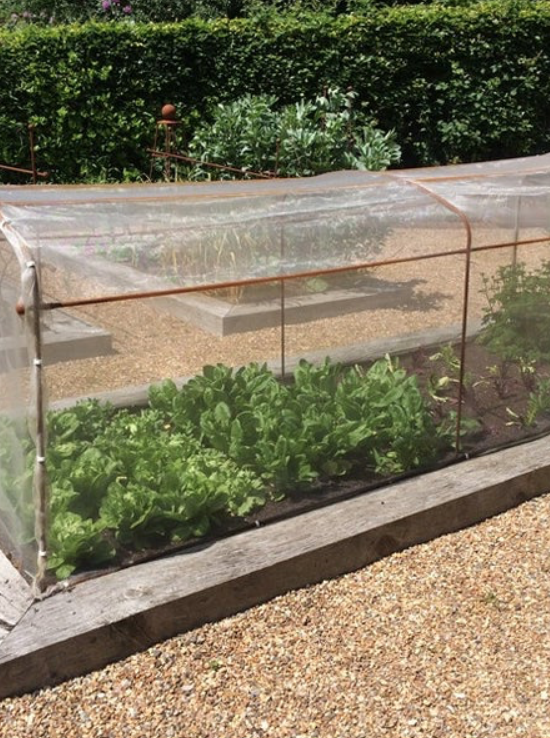
The addition of protective meshing in spring. Behind the vegetable cage you can see our broad bean supports in place alongside broad beans and peas and a small Abinger obelisk that we use for climbing French beans.
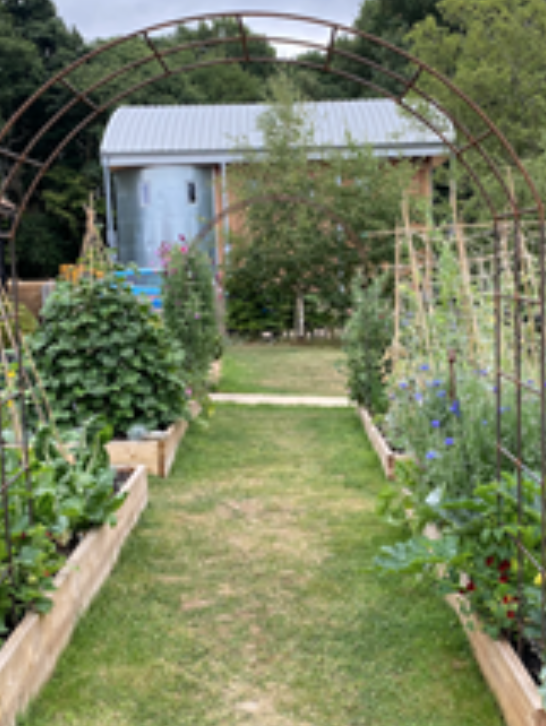
A potager with raised beds is home to fruit, flowers, vegetables and herbs. The squashes will be trained up the arch.

For runner beans, a square obelisk prevents the plants from collapsing when the pods are at their full weight.
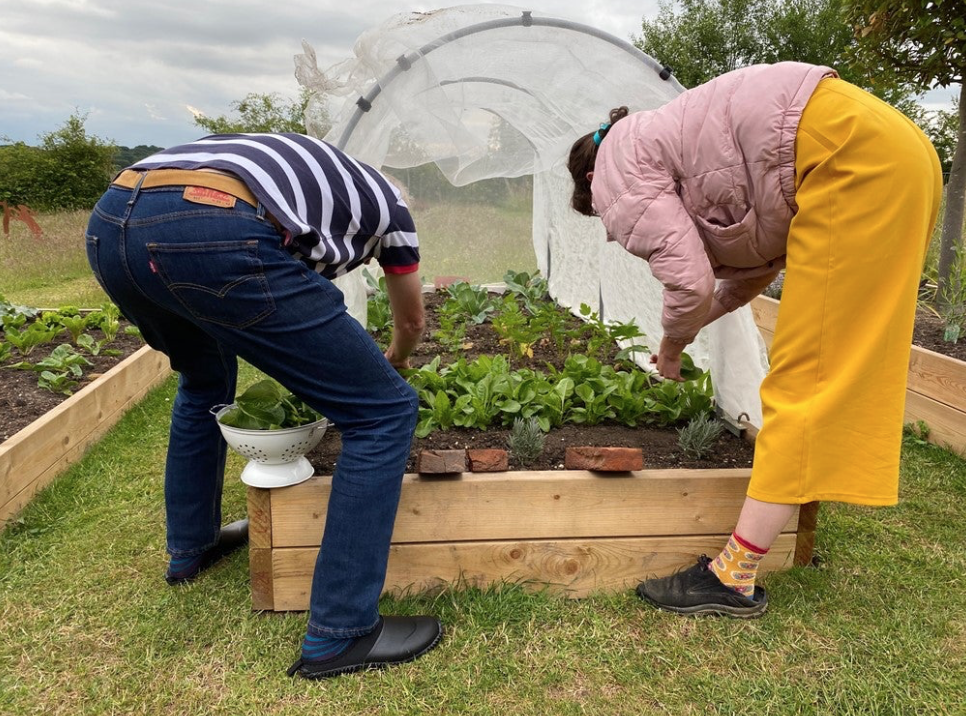
And the result?
Well, there’s nothing quite like picking the fruits of your labours!
